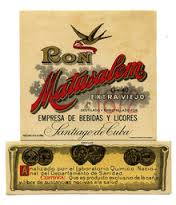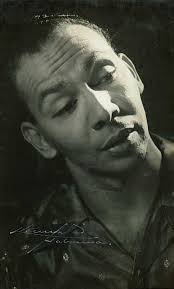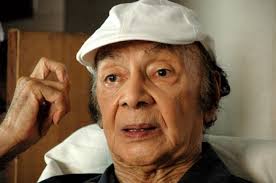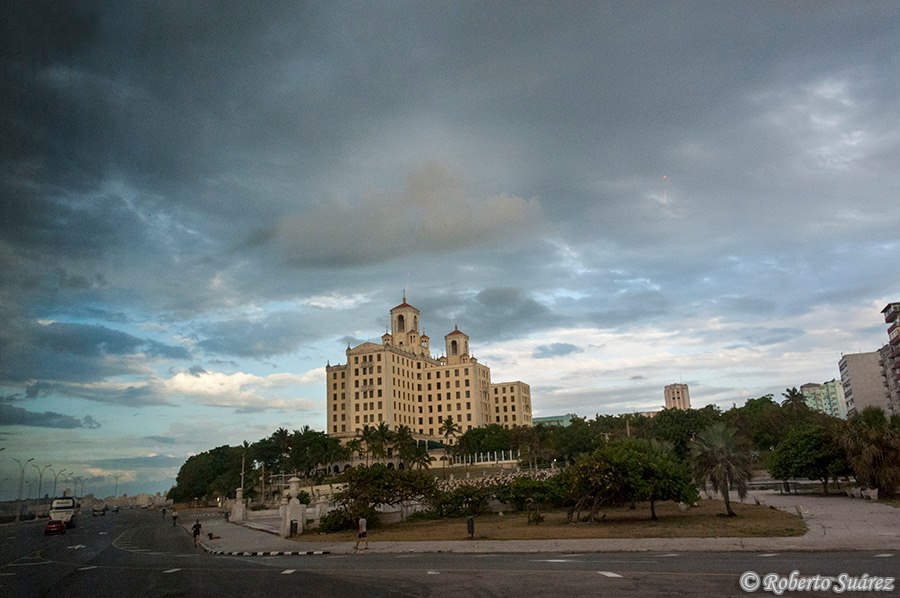CUBANO-ESPAÑOLES RECLAMAN PROPIEDADES QUE EN 1959 FUERON EXPROPIADOS EN CUBA.
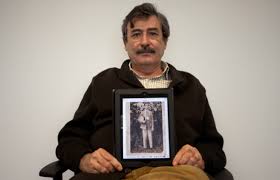
El asturiano González Fernández abandonó todo lo que tenía. Su hijo Arturo sostiene su fotografía. DAVID BESORA
La escapatoria era dejarlo todo atrás. De nuevo. Ese batallar por décadas, por media vida. El español Arturo González Fernández (Asturias, Trasona, 1905) emigró a Cuba con 14 años. Y le tocó. De nuevo. La Revolución Cubana, la que él mismo había financiado, le obligó a partir. Con lo puesto. El primer día de 1959, Fulgencio Batista, El Hombre, fue derrotado. Cayó su régimen. Y Arturo, quien apoyó a Castro y los suyos, poco a poco vio lo que deparaba ese cambio. Expropiaciones justas e injustas, con fusilamientos incluidos. Decidió regresar. Abandonó tres fincas rústicas y dos urbanas en Vitoria de las Tunas, además otra finca en La Habana. Se llevó los títulos de propiedad por lo que sucediera. Siempre quiso volver a por lo suyo: 55 años después hay una oportunidad. La Sociedad 1898-Compañía de Recuperaciones Patrimoniales en Cuba, con sede en Barcelona, está buscando en todo el país a las 3.000 familias que retornaron a España. Ya han firmado un acuerdo con esta organización 57 de ellas.
El inventario del patrimonio que dejaron tan sólo estas últimas es cuantioso: 255 viviendas, 71 solares edificables, 57 terciarios [propiedades dedicadas a los servicios, al comercio, a la industria] y 41 fincas rústicas [terrenos yernos, parcelas, tabaqueras, pastos, cañaverales]. El fin de su labor es exigir que Cuba devuelva los bienes o indemnice a los que escaparon. Cada uno de ellos con una vida de novela. En pleno escándalo por el relato sobre ‘La Vie Cachée de Fidel Castro’ (La vida oculta de Fidel Castro) -donde se relata su vida «a lo Luis XV»» en la Isla- sus herederos exigen justicia. Reparar la herida.
Arturo dormía en un barracón, en la trastienda de un tío emigrante como él. Llegó de un pueblo pequeño. Se fue a Cuba en 1919, nació en 1905. Dormía en la misma tienda donde trabajaba con su pariente lejano. «Era la tierra de las oportunidades… Vendió periódicos. Limpió zapatos», cuenta a Crónica su hijo, Arturo González Olmedo, consejero de BYA -grupo Bosch Aymerich-, director de la agencia de transportes Trota y catedrático de la Escuela de Organización Industrial.
Ahorraba y ahorraba. Hasta que el dinero le dio para sus primeras escaramuzas empresariales. «Se estableció… Tenía negocios de ganadería. Llegó a tener sus propios grandes almacenes. Estaba ubicado en Las Tunas, ciudad en el oriente [capital de la provincia del mismo nombre]». El ya exitoso empresario, para los años 50 estaba bien asentado en La Habana. «Poseía una finca de ganado con 1.000 cabezas, negocios inmobiliarios… y era dueño de Almacenes Cayamas». Esta gran superficie era uno de los focos del comercio de Las Tunas, una zona geográfica también conocida como el Balcón de Oriente.
… Uno de 3.000, según estima el informe de la Universidad Creighton sobre las reclamaciones de propiedad entre Cuba y España, actualizado hace tres años, que utiliza la Sociedad 1898 como pilar para sustentar la enorme deuda económica que el Gobierno de los Castro tiene con esos españoles, con las 3.000 familias de Cuba expropiadas, las que salieron entre 1959 y 1962, el foco de su actividad. De ellos una buena parte está en Galicia, Asturias y Cataluña. Sólo entre los gallegos se contarían 600. Su reclamación esta semana alcanza otras dimensiones cuando se han hecho públicos nuevos movimientos en -o a favor de- Cuba para liberarlos de la precariedad económica que padecen sus habitantes.
ACTUALIDAD.
El lunes se difundió que 40 personalidades firmaron una carta dirigida al presidente de EEUU, Barack Obama, para que acelere las medidas para la apertura económica de la isla. Léase, el fin del embargo. Entre ellos nombres de alcurnia como David Rockefeller, nieto del todopoderoso John D., el magnate venezonalo-dominicano-español Gustavo A. Cisneros… Y además, como bien explica el intelectual Moises Naim, también firmante de la carta: «Tres ex subsecretarios de Estado para el Hemisferio Occidental -Jeff Davidow, Alexander Watson y Arturo Valenzuela-, dos antiguos representantes de la sección de intereses de Estados Unidos en La Habana -incluido Michael Palmry, designado por el republicano George W. Bush- y el ex comandante supremo aliado de la OTAN y comandante del Comando Sur estadounidense (SouthCom) almirante James Stavridis». Casi nada. El fin del embargo y la apertura de la isla tendrían repercusiones mundiales. Por ende, obviamente, también en Europa. Desde febrero, por ejemplo, la UE aprobó charlar con Cuba. El primer paso sería mejorar las relaciones comerciales.
PRECEDENTES.
Pero, como en el caso de los países del antiguo bloque soviético, creen desde 1898 que Cuba deberá por fin hablar de compensaciones o devolución de los bienes confiscados. «La historia y los estudios confirman que la resolución del conflicto patrimonial será uno de los principales asuntos que se abordarán, independientemente del tipo de régimen en que nos encontremos», señalan desde esta organización.
«La historia de la caída de los países comunistas de Europa del Este, en su tránsito de una economía planificada a una de libre mercado, nos brinda la oportunidad de entender cómo se solucionó el problema patrimonial», extractan del informe de la Universidad Creighton. Se cita la experiencia tras la caída de los regímenes comunistas de República Checa, Estonia, Letonia, Eslovaquia, Hungría, o la República Democrática Alemana… En todos los países citados «se promulgaron leyes para su recuperación».
Ésa es la esperanza de las familias españolas que ven las propiedades de sus familias en fotografías sepia. Una esperanza retratada en canciones incluso. «Nunca podré morirme, mi corazón no lo tengo aquí./ Allí me está esperando, me está aguardando que vuelva allí./ Cuando salí de Cuba, dejé mi vida, dejé mi amor./ Cuando salí de Cuba, dejé enterrado mi corazón…», cantaba Luis Aguilé, otro expropiado. A él se le quedaron cuando la Revolución triunfó 14.500 dólares, de los 16.000 que tenía, su disco de oro…
En la carta a Obama aparece uno de los reyes del azúcar mundial, Andrés Fanjul, miembro de los polémicos Fanjul Brothers, una familia que dejó gigantes campos de caña en su salida. Eran del grupo de los amos del principal producto de exportación del país.
Uno de los hombres que vendía el azúcar de Cuba era el reputadísimo Claudio Escarpenter. «Trabajó con Batista y huyó en una misión diplomática de venta de azúcar», cuenta María Teresa Escarpenter, su hija, responsable de Ediciones Nowtilus. Es la historia de una saga histórica. El padre de Claudio llegó a principios del siglo XX. «Con 16 años le mandaron a hacer fortuna y la hizo». No vio «el largo de la calle por dos años».
NUEVA LEY DE INVERSIONES.
La necesidad de dinero de Cuba es enorme y puede complicar la misión de Sociedad 1898, que espera poder alcanzar el sueño de estos exiliados españoles en una década a lo sumo. Se acaba de aprobar por resolución del Ministerio del Interior una nueva visa para los extranjeros «que sean propietarios o arrendatarios de bienes inmobiliarios, así como de sus familiares extranjeros que lo requieran». Es parte del camino que surge tras la nueva Ley de Inversiones, promulgada en marzo, que permitía la adquisición de inmuebles a extranjeros inversionistas. De venderse bienes que antes fueron expropiados, el lío jurídico sería tremendo para los reclamantes [y para Sociedad 1898 que sólo cobra si tienen éxito las reclamaciones: se lleva un 30% de las posibles indemnizaciones].
Ya largo tiempo han esperado. Lorenzo Abascal, empresario, recuerda a la perfección el lugar donde quedaba la destilería de su familia. «La fábrica y alambique Ron Castillo era vecina de Ron Bacardi y de una cervecería».
Se ubicaba en Santiago de Cuba. La marca Castillo era propiedad de la familia por parte de su madre, Josefina, quienes también poseían la destilería Rovira y Compañía. «Nos fuimos porque el que se quedaba podía ir a la cárcel». Cuando fueron expropiadas todas las empresas de ron, otra de las exportaciones importantes del país, «el ron Castillo se convirtió en la alternativa para el consumo de los cubanos, en la marca para consumo interno». Lorenzo, que reside en Cataluña y con una agenda imposible, suelta un suspiro mientras recuerda la vida de sus padres. Donde sus abuelos hicieron fortuna. «Acabaron en Barcelona pensando que en poco tiempo volverían». Sus herederos esperan cumplir su voluntad.
ELMundo.Spain/MartinMucha/Excerpts/InternetPhotos/www.thecubanhistory.com
CUBANO-ESPAÑOLES RECLAMAN propiedades que en 1959 fueron expropiados en Cuba.
The Cuban History, Hollywood.
Arnoldo Varona, Editor
Vista de La Habana, CUba. (Cuba en Fotos).
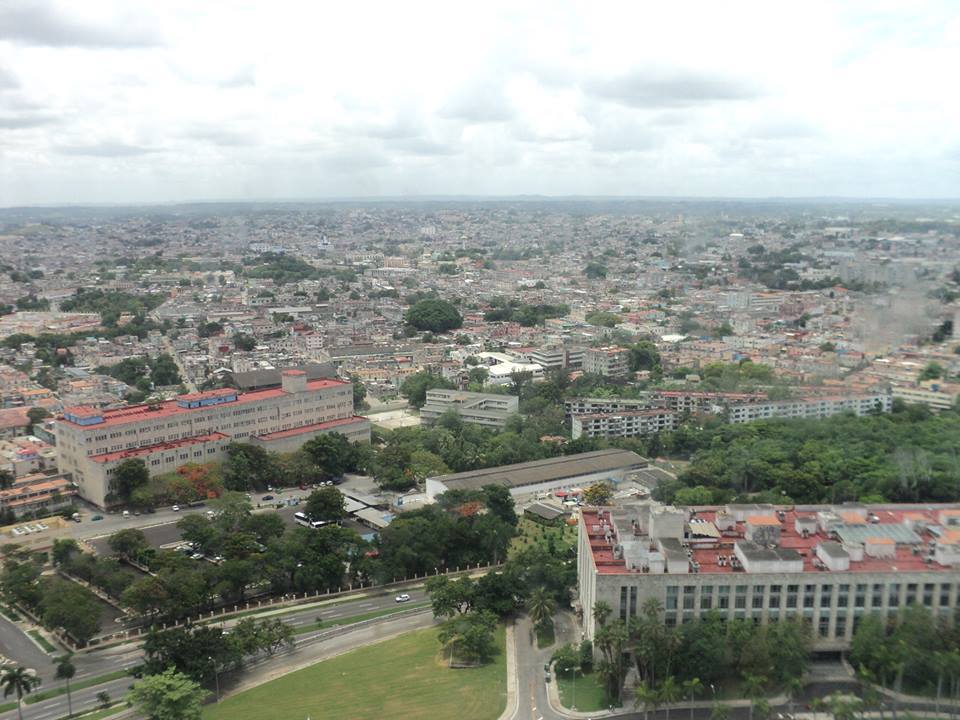
CUBAN-SPANIARD CITIZENS CLAIM PROPERTIES WERE EXPROPRIATED BY CUBAN GOVERNMENT IN 1959.

The Cuban-Spaniard González Fernández left all he had. His son Arthur holds his photograph. DAVID BESORA
The escape was to leave everything behind. Again . That battle for decades, and half-life. The Spanish Arturo González Fernández (Asturias, Trasona , 1905) emigrated to Cuba in 14 years. And he touched . Again . The Cuban Revolution , which had financed himself , forced him to leave. With nothing . The first day of 1959 , Fulgencio Batista, The Man, was defeated . His regime fell . And Arthur , who supported Castro and his gradually saw what was in store for that change. Just and unjust expropriations, with shootings included. He decided to return . He left three urban and two rural properties in Vitoria de las Tunas , plus another property in Havana. Land titles so took happened . Always wanted to go back for his: 55 years after there is an opportunity . 1898 – The Company Company Heritage Recoveries in Cuba , based in Barcelona , is looking nationwide to 3,000 families who returned to Spain . They have already signed an agreement with the organization 57 of them.
The inventory of the heritage left only latter is large : 255 homes, building plots 71 , 57 tertiary [ properties dedicated to services, trade , industry ] and 41 rural properties [ sons plots, tobacco , pastures, reeds ] . The purpose of their work is required to return the goods or Cuba compensate those who escaped . Each with a life of romance . Located in the scandal story about ‘La Vie Cachée Fidel Castro ‘ ( The Hidden Life of Fidel Castro) , where it chronicles his life ” to Louis XV » » on the island – his heirs demand justice . Wound Repair .
Arturo slept in a hut in the back room of an emigrant uncle like him. He came from a small town . He went to Cuba in 1919 , was born in 1905. Slept in the same store where he worked with his distant relative. “It was the land of opportunity … He sold newspapers. He cleaned shoes ‘ Recap account to his son, Arturo Gonzalez Olmedo, director of BYA – group – Bosch Aymerich , director of the freight Trot and professor at the School of Industrial Organization.
I saved and saved . Until the money gave him to his first business skirmishes. ” … It had been established livestock business . It came to have their own stores. Was located in Las Tunas, in the eastern city [ capital of the province of the same name ] . ” The already successful entrepreneur for 50 years was well established in Havana. ” He had a farm with 1,000 head of cattle , real estate … and owned Cayamas Storage .” This large area was a focus of trade in Las Tunas, a geographical area also known as the East Balcony .
One … 3000 , estimates the report of the Creighton University over ownership claims between Cuba and Spain , updated three years ago, the Company uses 1898 as a pillar to support the huge economic debt that the government of Castro has with those Spaniards with Cuba expropriated 3,000 families , which came out between 1959 and 1962 , the focus of their activity. A good portion of them are in Galicia , Asturias and Catalonia. Just be counted among the Galician 600. Their claim this week reached other dimensions have been released or new movements – for – Cuba to free them from financial hardships endured by its inhabitants.
ACTUALITIES.
On Monday 40 personalities spread that signed a letter to U.S. President letter , Barack Obama, to step up measures to economic openness on the island. Read the end of the embargo . These rank names as David Rockefeller , grandson of John D. almighty mogul venezonalo – Dominican – Spanish Gustavo A. Cisneros … And , as it explains the intellectual Moises Naim , also signed the letter: ” Three former secretaries of state for Western Hemisphere – Jeff Davidow, Alexander Watson and Arturo Valenzuela , two former representatives of the section U.S. interests in Havana – including Michael Palmry appointed by Republican George W. Bush and former commander supreme Allied commander of NATO and U.S. Southern Command ( SOUTHCOM ) Admiral James Stavridis ‘. Almost nothing . The end of the embargo and the opening of the island would have global repercussions . Therefore, obviously , also in Europe. Since February, for example, the EU agreed to chat with Cuba . The first step would improve trade relations .
PRECEDENTS.
But, as in the case of the countries of the former Soviet bloc since 1898 believe that Cuba should finally talk about compensation or return of property confiscated. “The history and studies confirm that the equity conflict resolution is one of the main issues to be addressed , regardless of the type of regime in which we find ourselves ” note from this organization.
“The story of the fall of the communist countries of Eastern Europe, in its transition from a planned to a free market economy , gives us the opportunity to understand how the problem was solved patrimonial ‘, excerpted from the report of the Creighton University . He cites the experience after the fall of communist regimes in Czech Republic , Estonia , Latvia , Slovakia , Hungary, the German Democratic Republic or … In all countries cited “laws were enacted for recovery .”
That is the hope of the Spanish families are the properties of their families in sepia photographs. A hope portrayed in songs even . “Never will I die, my heart will not have here. / There is waiting for me , is waiting for me to come back there. / When I left Cuba , I left my life , I left my love. / When I left Cuba , I left buried my heart. .. ” Luis Aguilé sang another expropriated . He was left behind when the Revolution triumphed $ 14,500 , of which 16,000 had their golden record …
In the letter to Obama appears one of the kings of world sugar Andres Fanjul , a member of the controversial Fanjul Brothers , a family that left giant cane fields on output. They were the group of masters main export of the country.
One of the men who sold sugar was Cuba reputadísimo Claudio Escarpenter . ” He worked with Batista and fled on a diplomatic mission to sell sugar”, says Maria Teresa Escarpenter , his daughter, responsible Ediciones Nowtilus . It is the story of a historical saga. Claudio ‘s father arrived in the early twentieth century. ” At 16 he was sent to make a fortune and they did .” He saw “the length of the street for two years.”
NEW INVESTMENT LAW .
The need for money to Cuba is huge and can complicate the mission of Company 1898 , he hopes to achieve the dream of these Spanish exiles in a decade at most. Has just been approved by resolution of the Ministry of the Interior a new visa for foreigners ” who are owners or tenants of real estate , as well as their foreign relatives require .” It is part of the road that comes after the new Investment Law , enacted in March , allowing the acquisition of property for foreign investors . Of goods sold before they were expropriated , the legal mess would be tremendous for claimants [ and Company 1898 that only charges if successful claims : takes 30% of any compensation ] .
You have waited long time . Lorenzo Abascal , entrepreneur , remember perfectly where the distillery was his family. “The factory was still Ron Castillo Ron Bacardi neighbor and a brewery .”
It was located in Santiago de Cuba . The Castle brand was owned by the family of his mother, Josefina , who also owned the distillery Rovira and Company . ” We left because we left that could go to jail .” When were expropriated all companies rum , another important exports, ” Castillo rum became the alternative for Cuban consumption in the brand for domestic consumption .” Lorenzo , who lives in Catalonia and with an impossible schedule, sighs as she remembers the life of his parents. Where did your grandparents fortune. ” They finished in Barcelona thinking that soon I would return .” His heirs hope to accomplish his will.
ELMundo.Spain / MartinMucha / Excerpts / InternetPhotos / www.thecubanhistory.com
SPANISH – CUBAN CLAIMS properties that were expropriated in 1959 in Cuba .
The Cuban History , Hollywood.
Arnoldo Varona , Editor






